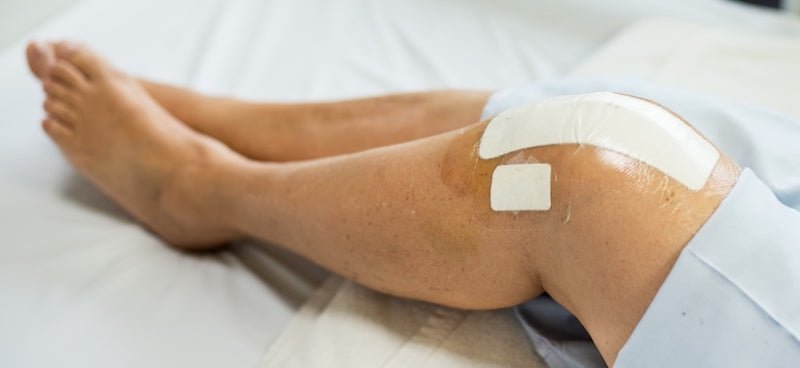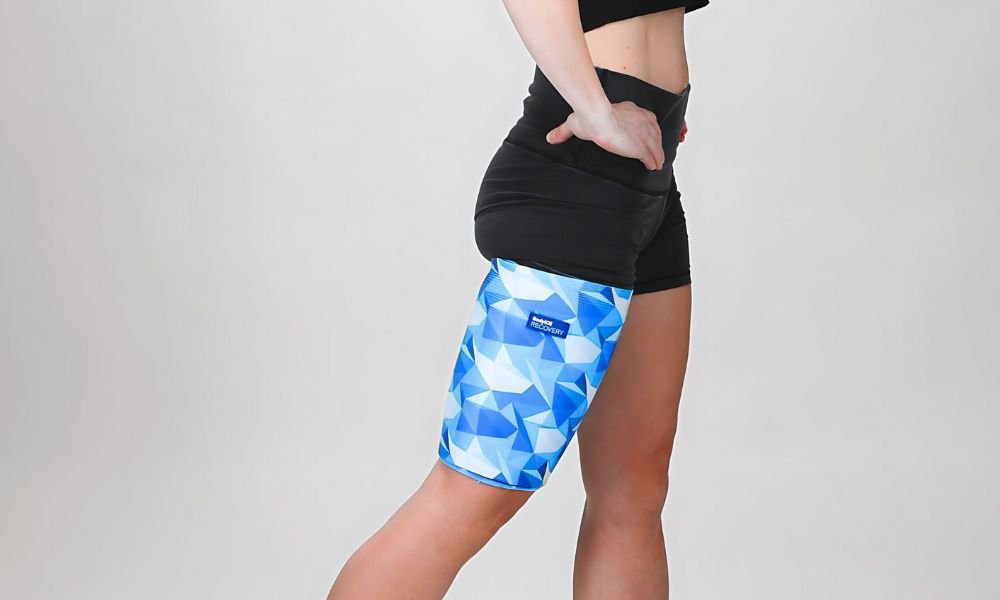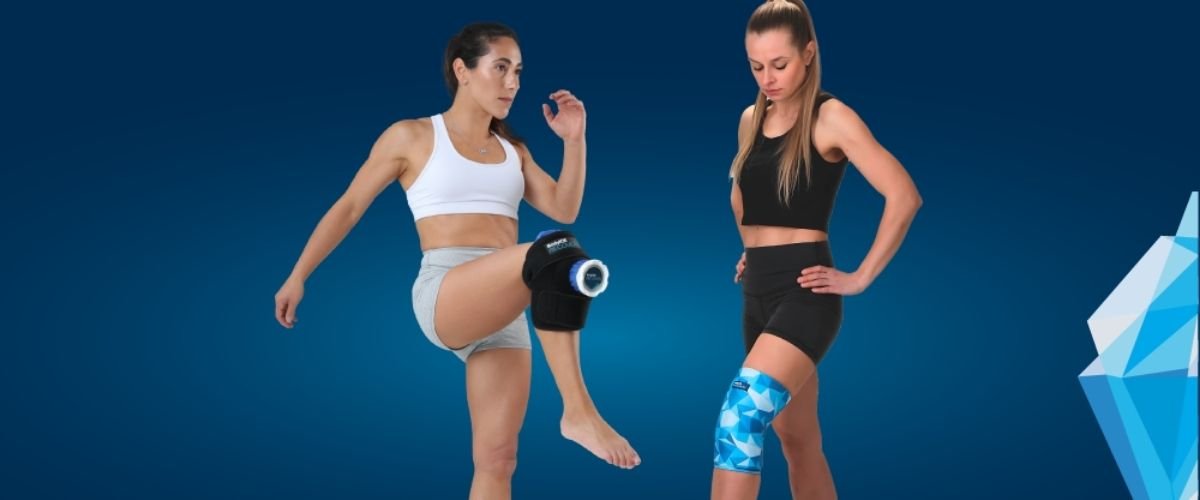Being side-lined due to injury can be a very frustrating time for any athlete or active individual, but coming out from an ACL reconstruction surgery may at times simply feel hopeless. You know you’ll have many weeks ahead of rehabilitation and care, meaning it’ll be quite some time before you’re working hard towards your goals again.
Fortunately, with the right approach, you can minimize your downtime and frustration and get back into the game sooner. Let’s go over what you should expect post ACL surgery so that you go in prepared.
Decrease Pain And Inflammation
Immediately after coming out of surgery, your goal will be simple: lower pain and reduce inflammation. The way you can do that naturally is through ice and compression. You’ll want to be sure to ice your knee often, applying compression as well. Our BodyICE Recovery Medium and Large Universal are designed specifically for knees and will compress the joint at the same time. Elevating the knee whilst icing throughout the day can also go a long way towards helping bring the swelling down as well.
Until you bring down this swelling and lower the inflammation taking place, it will be hard to proceed onward with rehabilitation exercises, so don’t skip this step. It can be tempting to want to dive right into the rehab portion, but first you must prepare yourself.
If there is one motto to remember, it’s that you cannot ice too much. Alternate between 15 minutes on and 15-30 minutes off as often as you can throughout the course of the day.
Restoring Range Of Motion
The next step once inflammation and pain have resided is to focus on restoring the range of motion. Most patients coming out of ACL surgery have very limited motion in their knee, especially in terms of extension. Restoring this as soon as possible is key to promoting a speedy recovery. Furthermore, those who don’t restore range of motion quickly and fully after surgery may be at a higher risk for developing arthritis in the long-term.
To help restore range of motion, you can perform hamstring and calf stretches.
Hamstring Stretch
Begin by sitting on a bench or couch with one leg on the floor, the other leg (the surgery leg) up on the couch. Extend the knee as best as possible and rest the leg straight with the foot pointing towards the ceiling.
If the knee is still bent, indicating troubles with full range of motion, press on the upper thigh ever so gently to try and ease into extension. You should feel a stretch in the hamstring while also likely feeling some tension in the knee as you loosen up the ligaments and tendons.
Note you should never push to the point where you feel sheer or uncomfortable pain during this stretch. Some tension is fine, pain is not.
Calf Stretch
The calf stretch is another great way to help restore range of motion. Assume the same position as the hamstring stretch but this time, wrap a towel or band around the foot, holding both ends in one hand. Now pull that band slightly as the foot flexes towards the body.
Hold it there as you feel the stretch in the calf.
If desired, you can repeat this on the other leg as well, however it is not necessary as range of motion is not compromised.
Smart Rehabilitation Exercises To Do
Once you have restored some range of motion, you can now begin with your rehabilitation exercises.
VMO Activation
First you want to work on your VMO muscle activation. You can actually get working on this straight after surgery. This muscle is important for helping to stabilize the knee joint and get you back to the point of walking again.
To do this, sit on the very edge of a counter or high chair with the knees slightly bent, the treatment foot slightly in behind of the other, both feet planted firmly on the floor. You can tuck the treatment leg heel behind the other if you wish.
Now, you’ll simply press into the floor with the treatment leg as you activate the muscle near the inner knee joint. Hold this for a count of 3-5 and then relax. Repeat 10 times or so and then rest for a few minutes before completing again a second or third time.
Straight Leg Lift
Next you have the straight leg lift. For this one, you’ll simply lay on the floor, back down with the forearms and hands placed just behind you for balance and support. The non-working leg should be bent with the foot on the floor.
Once in this position, slowly begin to lift the extended treatment leg up off the ground until it’s at about a 45 degree angle, pause, and then lower back down to complete the rep. Complete 8-10 reps, rest for a few minutes and then repeat.
Heel Slides
Finally, to help increase the bending motion in the knee, you’ll want to perform heel slides. To do these, simply lay on your back on the floor or a bed (without covers) and the legs extended.
Now from there, begin to slowly bend the treatment knee as you pull the foot towards your buttock. Continue bending slowly until you are as far as you can go and then extend the legs to finish the rep. At not point should the heel lose contact with the floor or bed.
Perform this 10-15 times and then rest for a few minutes and then repeat.
Perform these exercises daily as you work towards full recovery.
Mind Your Nutrition
Finally, it’s also critical that you are watching your nutrition as well. Remember that the foods you eat will provide the building blocks your body will use to generate new tissue with, so if you are not eating the right foods, it can become very challenging to recovery optimally.
First, stay away from alcohol entirely. As alcohol is a toxin, when it enters your system your body will stop the repair process entirely until that alcohol is oxidized off.
Instead, drink plenty of water and herbal teas, especially green tea as it is known for its anti-inflammatory properties. Proper hydration is necessary to keep the knee joint lubricated.
Additionally, be sure that you are eating adequate amounts of lean protein in your diet as well. Protein will provide the building blocks your body needs to repair the muscles, tendons, and ligaments, speeding up the recovery process.
To that protein, be sure to add adequate amounts of healthy fats and carbohydrates as well. These two nutrients will help provide the energy your body will use to generate the repair process.
Stick to natural foods as often as possible, limiting the refined carbohydrates and convenience-type of foods in your diet.
By eating well, you’ll be doing that much more to kick-start the recovery process.
These are the initial steps you need to take post ACL reconstructive surgery. It can be a frustrating time but if you stay positive and focus on the proper rehabilitation steps, you can get past this and get back to the activities you enjoy once again. Ensure that you are working closely with a physical therapist to help you stay on track with your rehab.
Recovering from injury isn't just physical. There's a mental or emotional component to recovery as well - whether it be overcoming the trauma of injury or lost confidence. Head to our Mental Training section for resources and visualisations that will help you overcome adversity and build your confidence.











Leave a comment
All comments are moderated before being published.
This site is protected by hCaptcha and the hCaptcha Privacy Policy and Terms of Service apply.